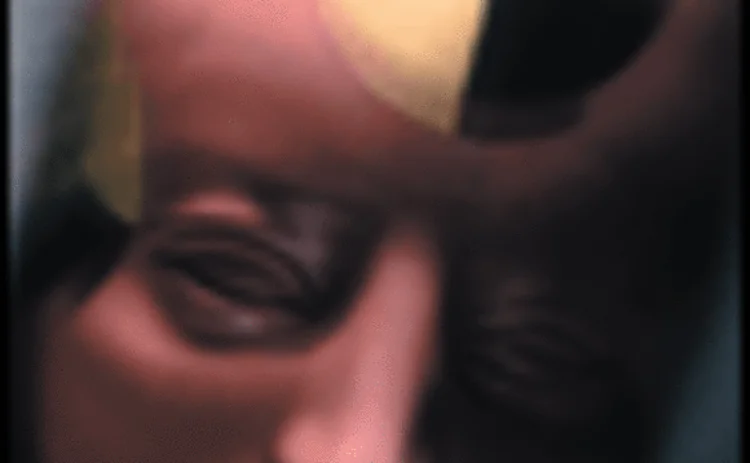
How shock-proof is the market?
Talk of a turn in the credit cycle has led investors to ask how the market would deal with an LTCM-style shock to the system. Saskia Scholtes looks back over previous cycles for clues

The market has a short memory, but few who experienced the Asian financial crisis in 1997 and the subsequent liquidity crunch caused by the Russian default and the collapse of Long-Term Capital Management (LTCM) in August 1998 will soon forget their seismic effects. Between July and October 1998, the spread between corporate bonds rated Aaa and US Treasuries widened from 109 basis points to 184bp, according to Moody’s Investors Service. On bonds rated Baa, the spread over Treasuries widened from 169bp to 265bp. Robert Rubin, who was the US Treasury Secretary at the time, called these events “the greatest financial crisis of the past 50 years”.
Exogenous shocks aside, some analysts suggest the current credit cycle is now analogous to 1997, referencing the same steep Treasury yield curve which flattened into 1998, low speculative default rates and tight spread environment of both eras. And with at least one major credit event looming on the horizon, as the market waits for General Motors to lose its increasingly precarious grip on its investment-grade rating, it’s worth assessing how the development of the market since 1997 might limit the impact of an LTCM-size shock.
The most obvious change in the credit market dynamic is the dramatic growth of credit derivatives. According to a recent survey from the International Swaps and Derivatives Association (Isda), notional volumes of credit derivatives reached a massive $8.42 trillion at the end of 2004, more than twice the volumes at the end of 2003 and more than nine times the volumes at the end of 2001 when Isda started surveying the market.
Rob Bloemker, portfolio manager at Putnam Investments, says that the credit derivatives market will play a crucial role in the next portion of the credit cycle and could help mitigate the repercussions of a large shock to the market. “Derivatives have brought more and more players into the debt markets, increasing liquidity through both the breadth of customers and the breadth of their demand. The ability to hedge credit risk with credit default swaps should dampen the pain of future downturns,” he says.
In December 2001, the sensational collapse of Enron, at the time one of the most actively traded reference entities, provided an important litmus test for a much less mature credit default swap (CDS) market. In the aftermath of the Enron bankruptcy, default swap premiums rose dramatically and doomsayers suggested that some banks would be nursing unsustainably large losses on their derivatives portfolios.
But, as it transpired, no single company was left with a destabilising amount of exposure to Enron and the exercise of the Enron contracts was completed without controversy. Since then, a host of other credit events ranging from Argentina’s debt default to WorldCom’s bankruptcy have done little to decelerate the expansion of a market widely regarded as an efficient risk management tool. Credit derivatives have now matured into indexation, basket products and the trading of correlation risk.
One index
The development of a unified index family for the CDS market in 2004 has perhaps been the most important development for the CDS market since its inception in the mid-’90s. The merger of the Trac-x and CDX indices into iTraxx in Europe (and Dow Jones CDX in the US) showed that major market participants were willing to make a commitment to the future of a maturing market by cooperating to create a larger, more efficient market with both liquidity and depth.
As a result, the improved liquidity in the CDX index families has lowered the bid-offer spread significantly, thereby reducing costs for market participants. Sunil Hirani, chief executive of credit derivatives e-trading platform Creditex, says that today the average bid-offer spread on the DJ CDX NA IG, DJ CDX NA IG HVol can be as low as ¼ to 1 basis point. Earlier in 2004, it would have been a multiple of that spread, he says. “As a result of the massive increase in liquidity and reduction in the bid-offer spread,” says Hirani, “CDS indices are now being used as an efficient trading tool and not just a hedging instrument.”
The result is a credit derivatives market that is more accessible in terms of pricing and transparency than ever before and that has seen dramatic growth in the number of participants. With better pricing, better transparency and more participants comes greater liquidity – a factor that traders say will be crucial to weakening the impact of future shocks to the markets.
With the recent launch of credit spread fixings on iTraxx, the door is now open for even more ways to manage credit risk exposure, through the creation and normalisation of many different kinds of second-generation products like constant maturity credit default swaps.
The current corporate debt cycle has also seen the dramatic growth of structured credit since the last credit bear market. The packaging of increasingly diverse and numerous assets, both in the cash and synthetic markets, into collateralised debt obligations (CDOs) reached a record $90 billion in 2004, a 58% jump from 2003 volumes, according to Moody’s, and a 450% jump since 1996.
During the dark years of credit in 2001 and 2002, a raft of CDO downgrades gave the asset class a bad name. However, CDOs fared no worse than corporate securities in 2002 – with only 24% of CDO tranches suffering downgrades, according to Moody’s.
Structured products now have more diverse portfolios and greater structural protection than ever before. And this market has become increasingly complex, with the development of CDOs-squared and CDOs-cubed, as well as the potential for synthetic single-tranche CDOs, customised to buyers’ specifications. By giving investors access to tranches of diverse debt portfolios and even permitting customised diversity through the credit derivatives market, investor portfolios should, in theory at least, be better protected in the event of an exogenous shock to the market.
However, the likely impact of the third change in today’s market vis-à-vis the previous market cycle – the current multitude of hedge funds investing in credit – is less clear-cut. Jack Malvey, global credit strategist at Lehman Brothers says: “Hedge funds were far less significant in 1997. Only a handful were really operating in the credit theatre.” In today’s market, start-ups seem to be springing up daily and star fund managers or sell-side traders can often start out with several billion in committed capital.
According to a recent report from independent research provider CreditSights, some estimates suggest that hedge fund assets under management are already fast approaching €760 billion, from around €300 billion in 2003. At this point, CreditSights estimates there are about 7,000 hedge funds, approximately equal to the 7,000 traditional money management firms in existence.
Bloemker at Putnam Investments says that in the event of a downturn, “the majority of hedge funds will dampen spread volatility because they are aggressive and can act very quickly when spreads move. However, there could be some concern if a fund or funds with large exposures had increased margin requirements and were forced to liquidate.” A margin requirement represents the rate of collateral a dealer asks to hold against the risk of a counterparty defaulting. At the beginning of 2005, the International Swaps and Derivatives Association estimated that €920 billion of collateral was in use overall, and that 88% of credit derivative transactions were supported by collateral.
But while collateral usage is a mitigating factor on the one hand, Bloemker also points out that the degree of hedge fund-specific leverage in the market remains an unknown. “Hedge fund portfolios generally have lower inherent leverage than in the days of LTCM, and hedge fund managers are shooting for more realistic 10–15% returns. But at the same time, there are a lot of hedge funds and a lot of start-ups in an industry which is hard to measure and hard to monitor.”
Leverage
CreditSights argues that the degree of leverage in today’s credit markets will be one thing to watch during the next credit downturn. The growth in the hedge fund market, together with the resurgence of banks’ proprietary trading desks, the growth of structured products and the evolution of the CDS market have all contributed to further leverage in the corporate debt markets. “Given that the derivatives market for credit now swamps the cash market in size and that much of the leverage employed is in structured product, we believe that any unwind has the potential to be extremely messy,” says a CreditSights report.
If this is the case, then does today’s market have the potential for the kind of liquidity seizure triggered by the exogenous shock of the 1998 Russian default and subsequent collapse of LTCM? Malvey at Lehman Brothers says: “Never say never. We have a broad risk list for exogenous events, not for this year but one to three years out.”
On the fundamental credit side, S&P’s downgrade to General Motors and Ford debt has been understandably disruptive to the credit markets. But many would agree that ‘shock’ is not quite the right word for a situation that has been on investors’ radars for some time now. The GM downgrade does not bode well for overall spread performance while the market adjusts, but few can claim to have been taken by surprise.
Indeed, based on the past 30 years of credit market history, it would be a bigger surprise were there to be no shocks or systemic spread expansion over the next five years. The market’s problem is to predict what the potential causes of spread widening could be and how a market that has transformed over the last several years would cope with it. Malvey says: “The great spread crash of August 1998 was occasioned by three factors: Russian devaluation and default; President Clinton’s confession and realised expectation of impeachment of a sitting US president; and LTCM. It’s almost never the first flow that derails a market; it’s usually a combination punch. It would take several events to produce a 1998 liquidity seizure.”
| Where are we now in the credit cycle? Identifying a best-fit line for today’s market dynamics against the historical experience of the previous cycle provokes disagreement among analysts, with various periods between 1993 and 1997 suggested as providing the most parallels. Chris Garman, high-yield credit strategist at Merrill Lynch, opts for 1993. “In 1993, the market was coming off a period of low interest rates which had pumped liquidity into the marketplace. Corporations were also moving away from balance sheet repair at a time when the labour markets were rebounding and the economy was growing again,” he says. According to Garman, real interest rates and high-yield spreads are now quite similar to those of around December 1993, as are many other factors, including credit formation, gross domestic product and implied volatility. Other analysts point to 1997, for its steep Treasury yield curve which flattened into 1998, its low speculative default rates and tight spread environment. At 285 basis points, the March 15 spread over Treasuries for the Merrill Lynch High Yield Index was only a touch above the last cycle’s monthly low of 271bp in August 1997. But Jack Malvey, global credit strategist at Lehman Brothers, says that the current period is more like “the mid-cyclical blend period of 1994–1995: the Fed is tightening, valuations are tight and aside from autos, there are few major credit stories at the moment.” |
Only users who have a paid subscription or are part of a corporate subscription are able to print or copy content.
To access these options, along with all other subscription benefits, please contact info@risk.net or view our subscription options here: http://subscriptions.risk.net/subscribe
You are currently unable to print this content. Please contact info@risk.net to find out more.
You are currently unable to copy this content. Please contact info@risk.net to find out more.
Copyright Infopro Digital Limited. All rights reserved.
You may share this content using our article tools. Printing this content is for the sole use of the Authorised User (named subscriber), as outlined in our terms and conditions - https://www.infopro-insight.com/terms-conditions/insight-subscriptions/
If you would like to purchase additional rights please email info@risk.net
Copyright Infopro Digital Limited. All rights reserved.
You may share this content using our article tools. Copying this content is for the sole use of the Authorised User (named subscriber), as outlined in our terms and conditions - https://www.infopro-insight.com/terms-conditions/insight-subscriptions/
If you would like to purchase additional rights please email info@risk.net
More on Credit risk
Finding the investment management ‘one analytics view’
This paper outlines the benefits accruing to buy-side practitioners on the back of generating a single analytics view of their risk and performance metrics across funds, regions and asset classes
Revolutionising liquidity management: harnessing operational intelligence for real‑time insights and risk mitigation
Pierre Gaudin, head of business development at ActiveViam, explains the importance of fast, in-memory data analysis functions in allowing firms to consistently provide senior decision-makers with actionable insights
Sec-lending haircuts and indemnification pricing
A pricing method for borrowed securities that includes haircut and indemnification is introduced
XVAs and counterparty credit risk for energy markets: addressing the challenges and unravelling complexity
In this webinar, a panel of quantitative researchers and risk practitioners from banks, energy firms and a software vendor discuss practical challenges in the modelling and risk management of XVAs and CCR in the energy markets, and how to overcome them.
Credit risk & modelling – Special report 2021
This Risk special report provides an insight on the challenges facing banks in measuring and mitigating credit risk in the current environment, and the strategies they are deploying to adapt to a more stringent regulatory approach.
The wild world of credit models
The Covid-19 pandemic has induced a kind of schizophrenia in loan-loss models. When the pandemic hit, banks overprovisioned for credit losses on the assumption that the economy would head south. But when government stimulus packages put wads of cash in…
Driving greater value in credit risk and modelling
A forum of industry leaders discusses the challenges facing banks in measuring and mitigating credit risk in the current environment, and strategies to adapt to a more stringent regulatory framework in the future
Accelerating the evolution of credit decisioning and modelling
Anthony Mancuso, director, global head of risk modelling and decisioning at SAS, explains the importance of developing a fully capable credit modelling lifecycle to empower non-specialist personnel, and offers insight into its own solutions to this end,…
Most read
- Top 10 operational risks for 2024
- The American way: a stress-test substitute for Basel’s IRRBB?
- Filling gaps in market data with optimal transport







